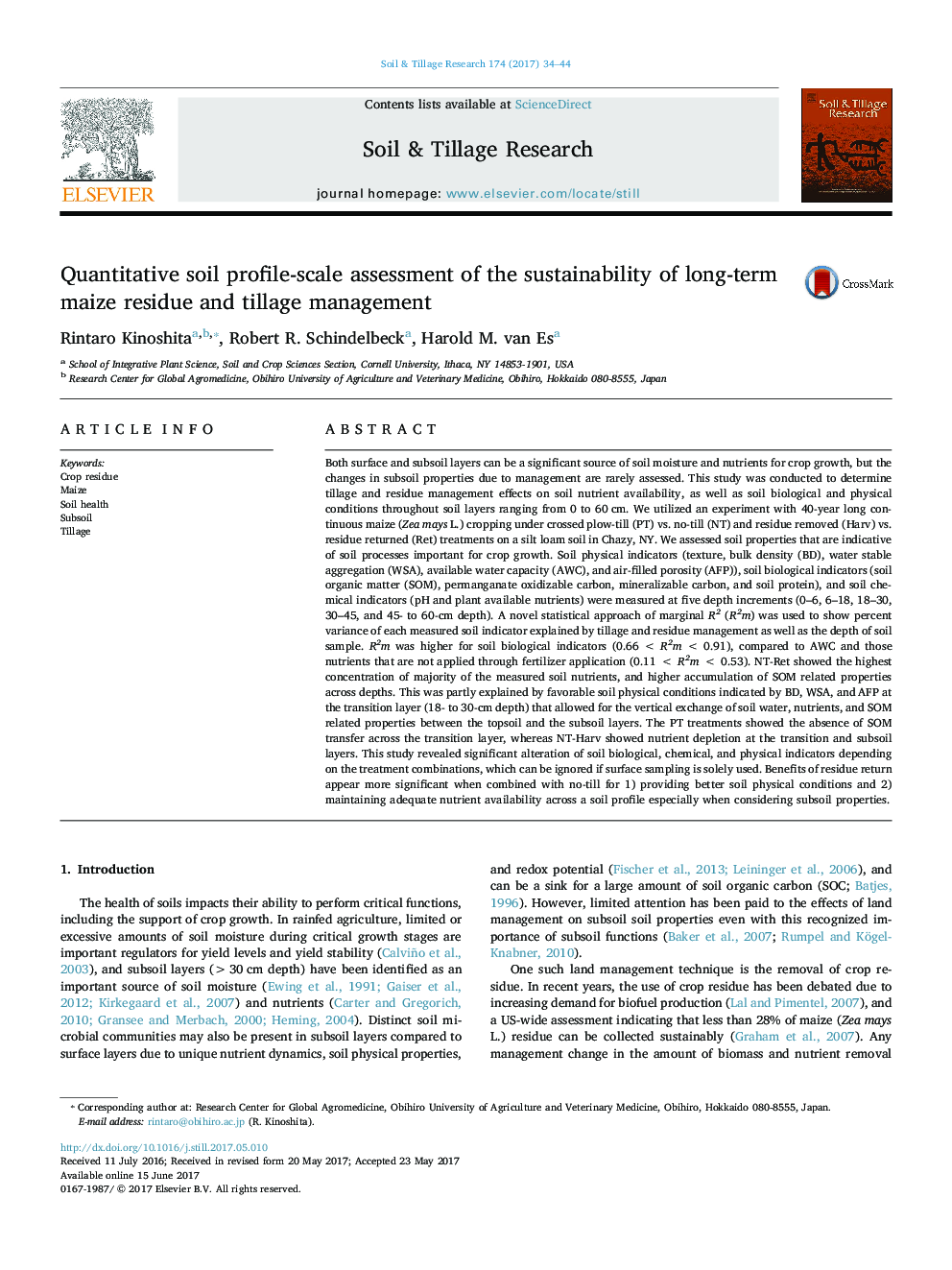| کد مقاله | کد نشریه | سال انتشار | مقاله انگلیسی | نسخه تمام متن |
|---|---|---|---|---|
| 4927452 | 1431829 | 2017 | 11 صفحه PDF | دانلود رایگان |
- No-till with residue showed higher Soil Health Scores compared to plow-till.
- No-till with residue maintained subsoil air-filled porosity similar to sod.
- No-till without residue showed poor soil health condition at the transition layer.
- No-till without residue caused subsoil nutrient mining.
- Percent variance explained by fixed and random factors assessed by novel statistics.
Both surface and subsoil layers can be a significant source of soil moisture and nutrients for crop growth, but the changes in subsoil properties due to management are rarely assessed. This study was conducted to determine tillage and residue management effects on soil nutrient availability, as well as soil biological and physical conditions throughout soil layers ranging from 0 to 60 cm. We utilized an experiment with 40-year long continuous maize (Zea mays L.) cropping under crossed plow-till (PT) vs. no-till (NT) and residue removed (Harv) vs. residue returned (Ret) treatments on a silt loam soil in Chazy, NY. We assessed soil properties that are indicative of soil processes important for crop growth. Soil physical indicators (texture, bulk density (BD), water stable aggregation (WSA), available water capacity (AWC), and air-filled porosity (AFP)), soil biological indicators (soil organic matter (SOM), permanganate oxidizable carbon, mineralizable carbon, and soil protein), and soil chemical indicators (pH and plant available nutrients) were measured at five depth increments (0-6, 6-18, 18-30, 30-45, and 45- to 60-cm depth). A novel statistical approach of marginal R2 (R2m) was used to show percent variance of each measured soil indicator explained by tillage and residue management as well as the depth of soil sample. R2m was higher for soil biological indicators (0.66 < R2m < 0.91), compared to AWC and those nutrients that are not applied through fertilizer application (0.11 < R2m < 0.53). NT-Ret showed the highest concentration of majority of the measured soil nutrients, and higher accumulation of SOM related properties across depths. This was partly explained by favorable soil physical conditions indicated by BD, WSA, and AFP at the transition layer (18- to 30-cm depth) that allowed for the vertical exchange of soil water, nutrients, and SOM related properties between the topsoil and the subsoil layers. The PT treatments showed the absence of SOM transfer across the transition layer, whereas NT-Harv showed nutrient depletion at the transition and subsoil layers. This study revealed significant alteration of soil biological, chemical, and physical indicators depending on the treatment combinations, which can be ignored if surface sampling is solely used. Benefits of residue return appear more significant when combined with no-till for 1) providing better soil physical conditions and 2) maintaining adequate nutrient availability across a soil profile especially when considering subsoil properties.
Journal: Soil and Tillage Research - Volume 174, December 2017, Pages 34-44
